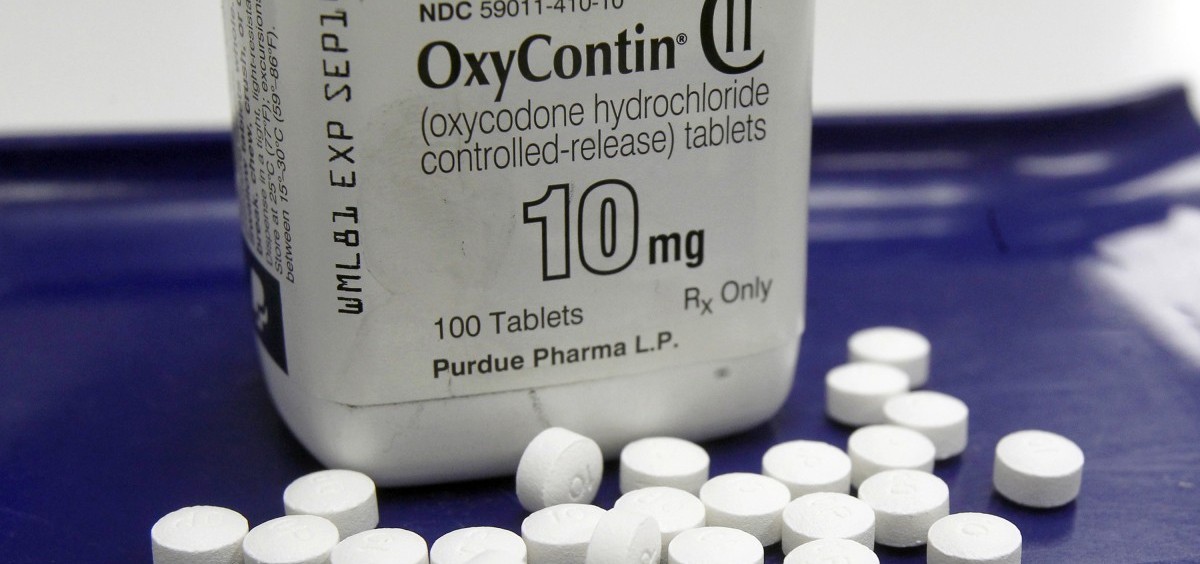News

New Data Show Opioid Deaths May Have Peaked, And Reveal Scale Of Past Pain Pill Sales
By: Aaron Payne | Ohio Valley ReSource
Posted on:
Two newly released sets of government data show that the death toll from the nation’s opioid crisis may finally be dropping and also reveal the scale of the pain pill sales that help set the crisis in motion. The data for the Ohio Valley show how hard the region was hit and how hard people in these communities have been fighting to save lives.
Preliminary health data from the Centers for Disease Control and Prevention show that fatalities from opioid overdose fell last year for the first time after decades of grim increase. Kentucky, Ohio and West Virginia – which have consistently suffered some of the highest fatality rates in the country – saw some of the most significant improvement.
Other newly-released government records, unsealed in a court case, show the extent of sales of opioid pain pills over a critical 5-year period in the growth of the opioid crisis. The data show drug manufacturers and distributors flooded the country with 76 billion opioid pain pills between 2006 and 2012, with some Ohio Valley communities receiving hundreds of pain pills for every resident.
Taken together, the new information sheds light on the origins of the nation’s deadliest drug epidemic and shows that the worst effects of the crisis may finally be falling off.
This CDC interactive graphic shows the latest data projections on overdose fatalities.
Flood Of Pills
The pain pill distribution data was recently unsealed in a court case that ties these prescription drugs to the broader opioid crisis. The Washington Post then analyzed the data to show pills that flowed to states and counties.
West Virginia and Kentucky received the highest concentration of prescription opioid painkillers at a rate of 66.5 and 63.3 pills for every person in the state each year. South Carolina, Tennessee and Nevada rounded out the top five states.
Rural areas in the Ohio Valley were hit particularly hard. Mingo County, West Virginia, had the third-highest concentration with 203 pills per person. Perry County, Kentucky, followed with 175. Norton, Virginia had the highest of any county or municipality at 306.
This flood of opioid painkillers came during a time period when the Ohio Valley had some of the highest fatal overdose rates in the country, with West Virginia consistently leading the nation.
The information on pain pill distribution came from a Drug Enforcement Administration database previously kept private.
The DEA tracked the path of every single pill sold in the United States from manufacturer, to distributor, to pharmacy, to doctor, to patient. And the information also included what these companies knew and when they knew about possible warning signs of over-saturation.
The Post determined only a handful of companies contributed to manufacturing and distributing these pills.
SpecGx, a subsidiary of Mallinckrodt; Actavis Pharma; and Par Pharmaceutical, a subsidiary of Endo Pharmaceuticals, combined to manufacture 88 percent of the opioids. (Purdue Pharma, which has been accused numerous times of creating the epidemic with the creation of OxyContin, ranked fourth by manufacturing 3 percent of the opioids.)
McKesson Corp., Walgreens, Cardinal Health, AmerisourceBergen, CVS and Walmart distributed 75 percent of the pills, according to The Post’s analysis.
The DEA data also shows the number of pills increased for years as the epidemic worsened. There were 8.4 billion pills in 2006. That increased to 12.6 billion pills in 2012.
Counties and municipalities in the Ohio Valley and around the country have filed lawsuits against the companies named above, and many others, claiming they played a role in the opioid crisis that has cost them a significant amount of money to combat.
The DEA data was under seal in these cases until The Post and HD Media, which publishes multiple papers in West Virginia, fought in court to have it released.
End In Sight
Officials put an emphasis on reducing the number of opioids available as a way to reduce the number of fatal overdoses.
On Wednesday, these officials had cause to believe these policies are beginning to pay off.
The Centers for Disease Control and Prevention released preliminary data that indicate fatal overdose deaths decreased nationwide by 5.1 percent in 2018.
While 16 states saw their numbers increase, the CDC says it is likely that the Ohio Valley experienced a dramatic reduction in fatal overdose deaths last year compared to 2017.
Ohio’s total fell 22.4 percent from 5,155 fatalities in 2017 to 4,002 in 2018. Kentucky’s total fell by 15.1 percent from 1,573 to 1,336, and West Virginia saw an 8.6 percent decrease in such deaths, from 1,048 to 958.
The CDC says it’s important to remember that their numbers are incomplete and won’t be finalized until sometime next year.
But officials around the country took the opportunity to see the report as a positive sign.
“Lives are being saved, and we’re beginning to win the fight against this crisis,” Department of Health and Human Services Secretary Alex Azar wrote in a statement. “Under President Trump’s leadership, and thanks to efforts on the ground by communities across America, the number of patients receiving medication assisted treatment has risen, distribution of overdose-reversing drugs is up, and nationwide opioid prescriptions are down.”
Synthetic Threat
Health officials put an emphasis on reducing the number of opioid painkillers thanks in part to the CDC 2016 prescription guidelines.
However the opioid crisis evolved and become more deadly with the rise of synthetic opioids, the most common of which was fentanyl.

Overdose death totals continued to increase in the Ohio Valley, which had some of the highest rates of synthetic opioid deaths in the country, according to another analysis from The Washington Post.
A year ago, the Justice Department launched Operation Synthetic Opioid Surge(S.O.S.) to crack down on illegal synthetic opioids in the Ohio Valley and other regions dealing with the increase.
The DOJ provided an update on Tuesday on what the operation has accomplished so far.
“Our attorneys and law enforcement agents have spent the past year working tirelessly to disrupt the networks engaged in the trafficking of synthetic opioids,” Deputy Attorney General Jeffery Rosen wrote in a statement. “We have successfully sought enhanced sentences in cases that resulted in deadly overdoses, and we have boosted cooperation among the partners involved.”
The Eastern District of Kentucky has reported 15 investigations, with six to eight new investigations being added monthly, and has charged nine sentence-enhanced “death resulting” cases.
The Northern District of Ohio has indicted 71 defendants under Operation S.O.S. and has seen a 12 percent decrease in overdose deaths from the previous year, according to the DOJ. The Southern District of Ohio has 58 Operation S.O.S. investigations, 52 involve fentanyl distribution.
The Northern District of West Virginia has 22 Operation S.O.S. cases with one “death resulting” prosecution. One of these investigations resulted in eight separate cases involving 35 defendants. The Southern District of West Virginia has 62 cases pending as a result of Operation S.O.S. with 13 convictions. Just recently, a 1.2 kilogram mixture of fentanyl and heroin was seized from a defendant in one of those cases.
“There remains much work to be done, but Operation S.O.S. marks a crucial turning point in the fight against synthetic opioids,” Rosen wrote.
Officials in the Ohio Valley say efforts from law enforcement and health organizations are making a needed impact. But officials also caution that resources are still neededto continue to combat the epidemic which has claimed thousands of lives in the region.


